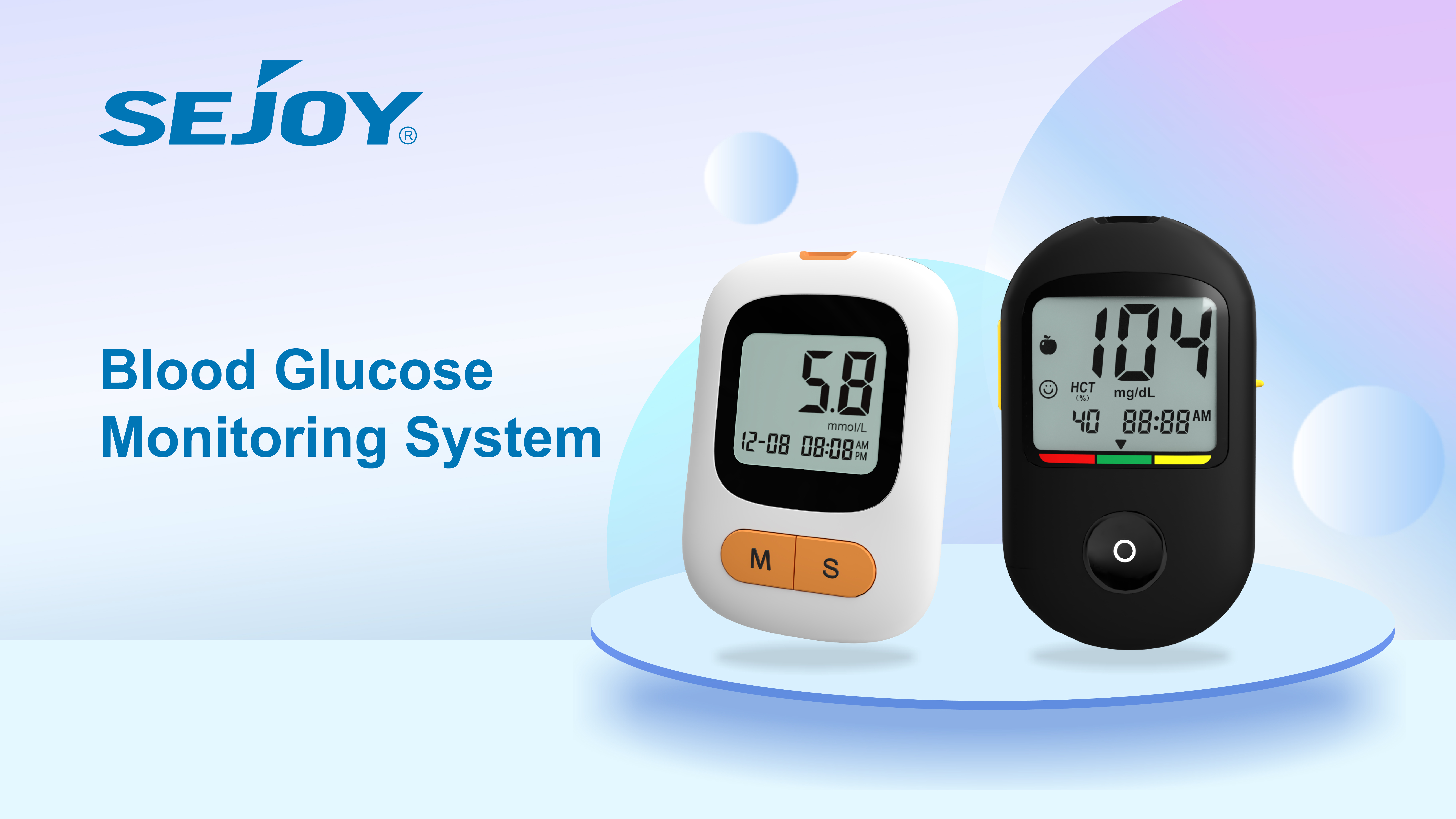A blood glucose meter is an instrument for measuring blood glucose, the most common being an electrode type blood glucose meter, which generally consists of a blood collection needle, a blood collection pen, a blood glucose test strip and a measuring instrument. The blood glucose test strip is divided into a conductive layer and a chemical coating. When measuring blood glucose, the glucose in the blood reacts with enzymes on the chemical coating, producing a weak current that is transmitted to the blood glucose meter through the conductive layer. The magnitude of the current is related to glucose concentration, and the blood glucose meter can convert accurate blood glucose values through the magnitude of the current.
Hand in hand teaching you how to measure blood glucose
Install the blood collection needle on the blood collection pen and insert the blood glucose test strip on the instrument; Wash your hands clean, then disinfect the fingers that collect blood, and use a blood collection pen to collect blood; Drop blood onto a blood glucose test strip and then press a cotton swab to stop the bleeding; After waiting for a moment, read the blood glucose value and record it.
glucose enthusiasts need to undergo self blood glucose monitoring system
When self monitoring blood glucose, the most commonly used methods are the 5-point method and the 7-point method due to the principle of timing and regularity. Simply put, it means measuring and recording blood glucose levels at 5 or 7 fixed time points in a day. The 5-point monitoring method measures fasting blood glucose once, once every 2 hours after three meals, and once before bedtime or at midnight. The measurement time of the 7-point monitoring method is once before three meals, once 2 hours after three meals, and once before bedtime or at midnight. These blood glucose values can reflect a lot of information: fasting blood glucose values can reflect the basic secretion function of insulin in the body; The 2-hour post meal blood glucose value can reflect the impact of eating on blood glucose, making it convenient to adjust the treatment plan; Blood glucose levels before bedtime or at night can help adjust insulin dosage.
Special emphasis:
1. The measurement time should be fixed, and blood glucose records should be kept well.
How is it compared to last week’s control? What is the difference from before the medication? Blood glucose data can help doctors find the most suitable treatment plan for you and also help you adjust your lifestyle habits.
2. Good blood glucose control, choose 1-2 days a week for 5-point or 7-point monitoring of blood glucose.
For new glucose users, unstable blood glucose control, or during the replacement of hypoglycemic drugs, it is necessary to use the 7-point method to measure blood glucose values every day until blood glucose control is stable.
How to choose a blood glucose meter that is suitable for oneself?
There are many blood glucose meters on the market, here is a selection guide for you! Blood glucose monitors are basically divided into three categories: economical, multifunctional, and dynamic blood glucose monitors. Economical blood glucose meters are the most common, easy to operate, and have accurate measurement results. They do not have any additional functions and can meet the needs of most glucose users. In addition to measuring blood glucose, the multifunctional blood glucose meter also has functions such as storing measurement results, calculating average blood glucose values, and connecting to mobile phones, providing convenience for glucose enthusiasts. The dynamic blood glucose detector can obtain continuous blood glucose values. This type of blood glucose meter does not require blood sampling. Wearing a special probe on the body can obtain 24-hour continuous blood glucose values, record every small change in blood glucose values, and display them on the phone at any time, which is quite convenient!
Post time: Sep-28-2023


